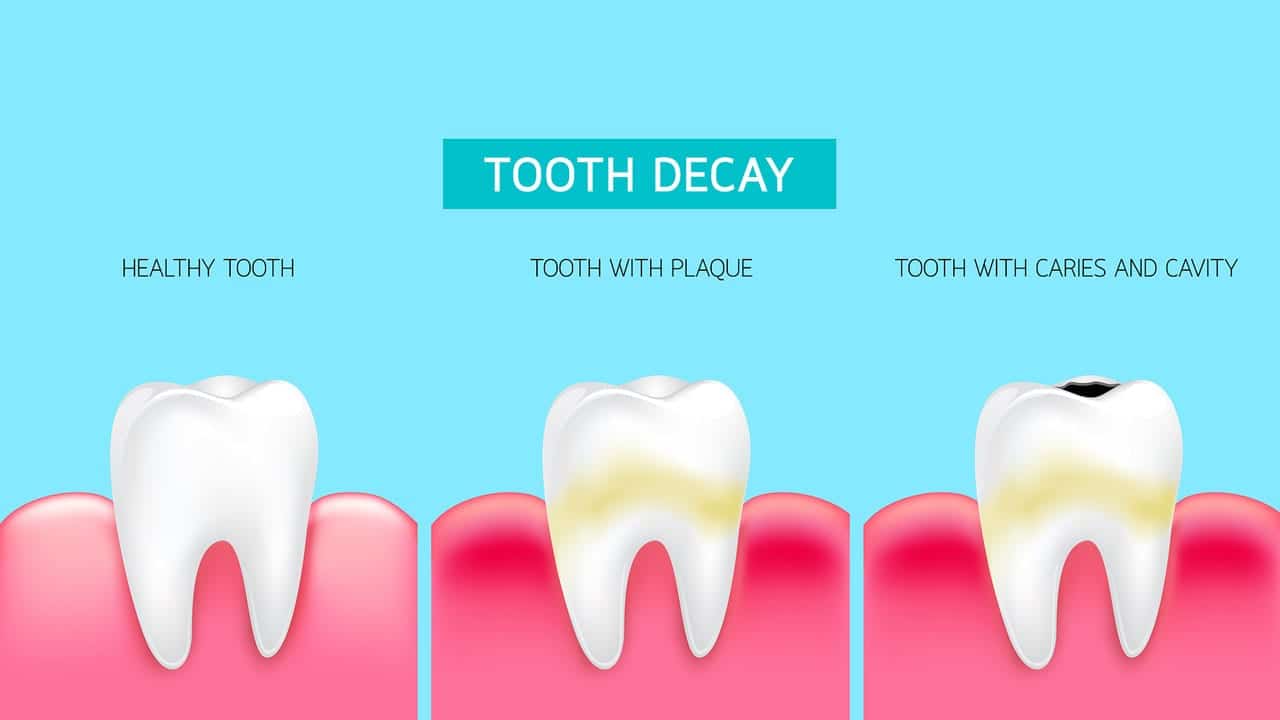What are cavities?
A cavity, also called tooth decay, is a hole that forms in your tooth. Cavities start small and gradually become bigger when they’re left untreated. Because many cavities don’t cause pain in the beginning, it can be hard to realize that a problem exists. Regular dental appointments can detect tooth decay early.
Finding out that you have a cavity might come as a surprise. This is especially true if you think you have a good oral hygiene routine. However, even if your dentist delivers this news, there are ways to treat a cavity and prevent new ones from forming.
Symptoms of tooth cavities
The symptoms of a cavity depend on the severity of the decay. They include:
- tooth sensitivity
- tooth pain
- a visible hole in your teeth
- black or white staining on your teeth
Causes of tooth cavities
Tooth cavities are caused by plaque, a sticky substance that binds to teeth. Plaque is a combination of:
- bacteria
- saliva
- acid
- food particles
Everyone has bacteria in their mouth. After eating or drinking foods with sugar, bacteria in your mouth turn sugar into acid. Plaque starts forming on your teeth soon after eating or drinking anything sugary. This is why regular brushing is important.
Plaque sticks to your teeth, and the acid in plaque can slowly erode tooth enamel. Enamel is a hard, protective coating on your teeth that protects against tooth decay. As your tooth enamel weakens, the risk for decay increases.
Everyone is at risk for cavities, but some people have a higher risk. Risk factors include:
- too many sugary or acidic foods and drinks
- a poor oral hygiene routine, such as failing to brush or floss daily
- not getting enough fluoride
- dry mouth
- eating disorders, such as anorexia and bulimia
- acid reflux disease, which can result in stomach acid wearing down your tooth enamel
Treatment options for tooth cavities
Tell your doctor about uncomfortable symptoms like tooth sensitivity or pain. Your dentist can identify tooth decay after an oral exam.
Treatment options depend on severity. There are several ways to treat a cavity.
Tooth fillings
A dentist uses a drill and removes decayed material from a tooth. Your dentist then fills your tooth with a substance, such as silver, gold, or composite resin.
Crowns
For more severe decay, your dentist may place a custom-fit cap over your tooth to replace its natural crown. Your dentist will remove decayed tooth material before starting this procedure.
Root canal
When tooth decay causes the death of your nerves, your dentist will perform a root canal to save your tooth. They remove the nerve tissue, blood vessel tissues, and any decayed areas of your tooth. Your dentist then checks for infections and applies medication to the roots as needed. Finally, they fill the tooth, and they might even place a crown on it.
Early-stage treatment
If your dentist detects a tooth cavity in its early stage, a fluoride treatment may restore your tooth enamel and prevent further decay.
Dealing with pain
Cavities and tooth decay can be the cause of a lot of pain and discomfort. You may want to find ways to soothe irritation while you wait for your dentist appointment.
- Keep up your oral hygiene routine. Continue to brush and clean all parts of your mouth, including any sensitive areas.
- Try over-the-counter (OTC) pain relievers. Check with your doctor if you can use OTC anesthetics.
- Watch what you eat. Stay away from extremely hot or cold foods when eating or drinking.
Are you looking for a Dentist?
If yes, then book your appointment at Quickobook.
It’s easy and trustworthy.









Comments (0)
No comments yet. Be the first to share your thoughts!
Leave a Comment